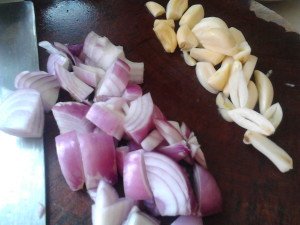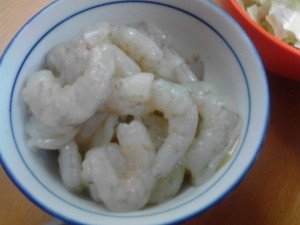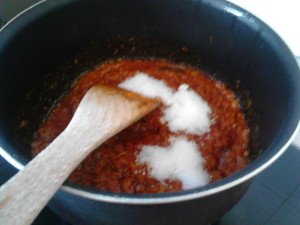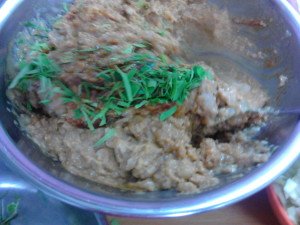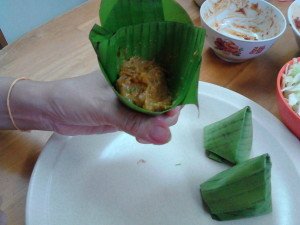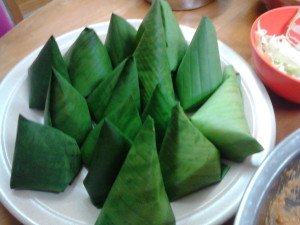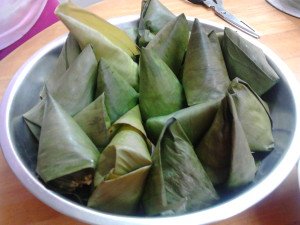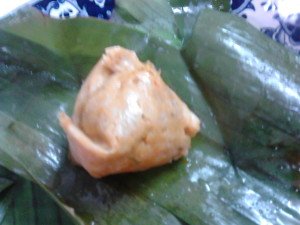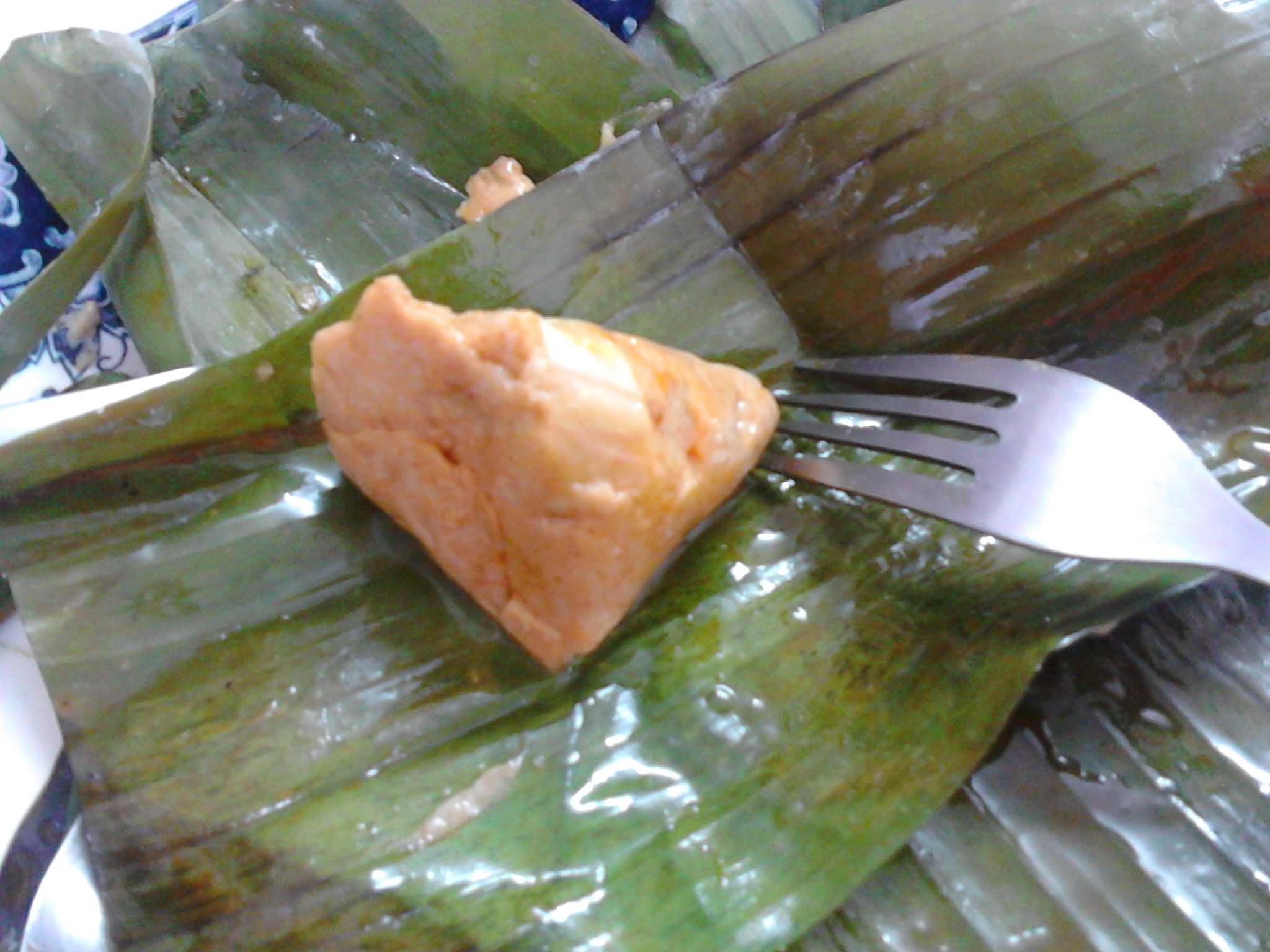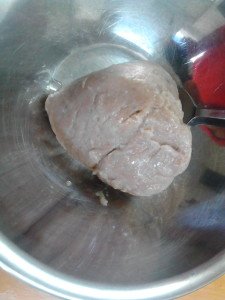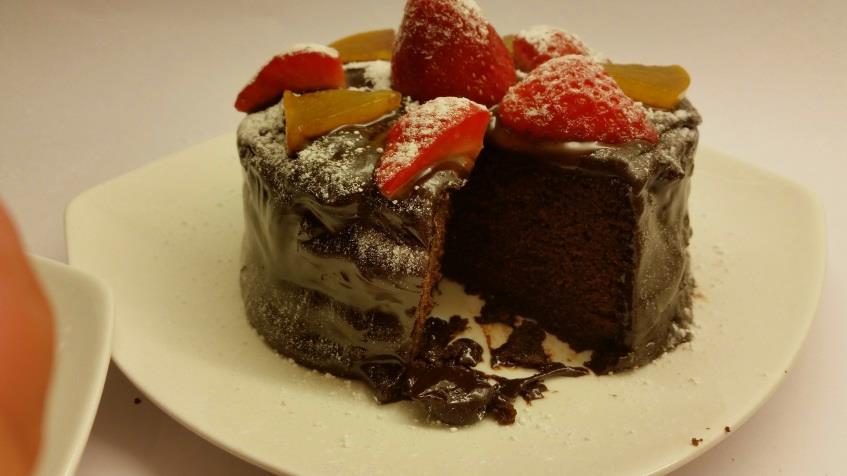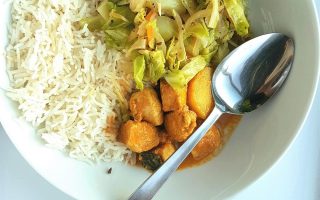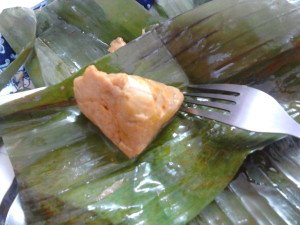
Soon after I arrived in Malaysia, a dear friend of mine, Chan and his wife Angie, invited me over for otak-otak. However, I have a prior appointment that evening I could not make it for dinner. Anyway Angie invited me over to share her recipe and make otak-otak. What a splendid idea!
So I went there in the afternoon and had a great time. Angie had all the ingredients ready.
According to Angie the otak-otak is sort of a cross between the Johor style and the Thai style. As far a I have tasted, the Johor ( Muar/Bath Pahat) style is wrapped in coconut fronds. The mixture is wrapped in between the 2 sides of a young coconut leaf . Then the otak-otak is barbecued over charcoal. This type of otak-otak is a bit dry, and if it is over cooked, can easily burn.
The Thai style is more like a mousse. The ingredients are mixed together, usually with the addition of beaten egg and steamed in boats shaped out of banana leaves. Alternatively, it is steamed in a big bowl lined with banana leaves or daun kadok and served in the bowl and the diners help themselves.
I have never made otak-otak before and my mother never made it as well. However, we used to get otak-otak from my neighbour who often made them. I cannot really recall the taste. I have eaten Thai otak-otak many times when I went to Thailand for business and holidays. Occasionally, we would order otak-otak when I go out with my sister in Penang.
The session with Angie was enjoyable and we get to eat the otak-otak fresh from the steamer. Angie wrapped the otak-otak in banana leaves resulting in cone-shaped parcels. This is faster than making rectangular boats from the banana leaves. It was delicious.
Angie has generously consented to share her recipe. As we normally cook by the ‘agak-agak’ (guessing) method, I was not able to get the exact amount of ingredients. However after the session with Angie, my sister-in-law and I made some and this time we weighed and measure the ingredients. We will be making otak-otak from now on.
Thanks, Angie, for sharing the recipe.
Quick info:
Level of difficulty: moderate
Cost : ££
Yield: around 20 pieces
Time: about 60 mins including wrapping and steaming (and chatting ☺)
Ingredients:
For sambal:
200g shallots
60g garlic
60g dried chillies, soaked and drained ( actually we used 120g soaked chillies as we missed out weighing the dried chillies.)
Or you can use chllie boh
100 ml cooking oil
3 tsp salt
4 tsp sugar
For the other ingredients:
450g ready made fish paste
1 1/2 tbsp fish curry powder
100g shelled medium sized prawns – season with a bit salt, pepper and a pinch of sugar
8-10 large limau perut (kaffir lime leaves) finely shredded
4-5 leaves of daun kaduk finely shredded. (optional)
1 coconut – extract thick coconut milk, or, get ready squeezed coconut milk or canned. (around 200ml)
3-4 leaves white cabbage – remove thick stem and finely shredded.
2 fronds banana leaves – cleaned and soften by blanching in hot water, or by heating them over hot fire. Then cut to about 18 cm width.
Equiptment:
A steamer.
Method :
Prepare the sambal
- Pound or blend the chillies, shallots and garlic till fine.
- Heat up a wok or frying pan with the oil . Add in the paste and fry until the oil separates. This method is called ‘tumis’ in Malay and Penang Hokkien dialect. There is no word for it in English.
- Add in the salt and sugar. Check the taste. It should have an intense taste as it will be used to flavour the fish paste.
- When it is done, dish out and set it aside to cool.
Prepare the paste.
- In a large bowl, mix the fish paste with about 1/3 of the sambal.
- Add in the about half the coconut milk and gently stir the mixture. It will become mousse-like. Add in the curry powder. Check that the paste has some colour ( a bit reddish) . Add more of the sambal if required. Add in enough coconut milk to get a soft mousse like texture.
- To adjust the taste: take a teaspoon of the mixture and nuke it in the microwave for 20 to 30 seconds. Cool and check the taste so that there is a balance of saltiness, sweet and chillie heat. Add more sambal if you want it to have more heat. You can also check that it is softness that you want. Add more coconut milk if you prefer a softer mousse. The mixture should be light like a chiffon cake mixture.
- Once you are happy with the taste and texture, add in the shredded leaves, and mix well.
To wrap:
- Take a piece of the banana leave and fold it into 4.
- Open up on section of it so it becomes cone shape.
- Add in 1 tbsp of the fish paste. Add a prawn onto it. Add in a bit of the shredded cabbage and top with 1 tbsp of the fish paste.
- Gently pat to compact the filling and fold the open end of the cone like sealing an envelope. Fold the flap over and tuck it in and place the cone with the folded end underneath.
- Repeat until all the paste are used up.
- Heat up the steamer. Arrange the cones on the steaming tray or plate and steam for about 20 minutes.
- Check that the a otak-otak is cooked – it is cooked when the paste is firm.
- Serve hot with other dishes or rice.
